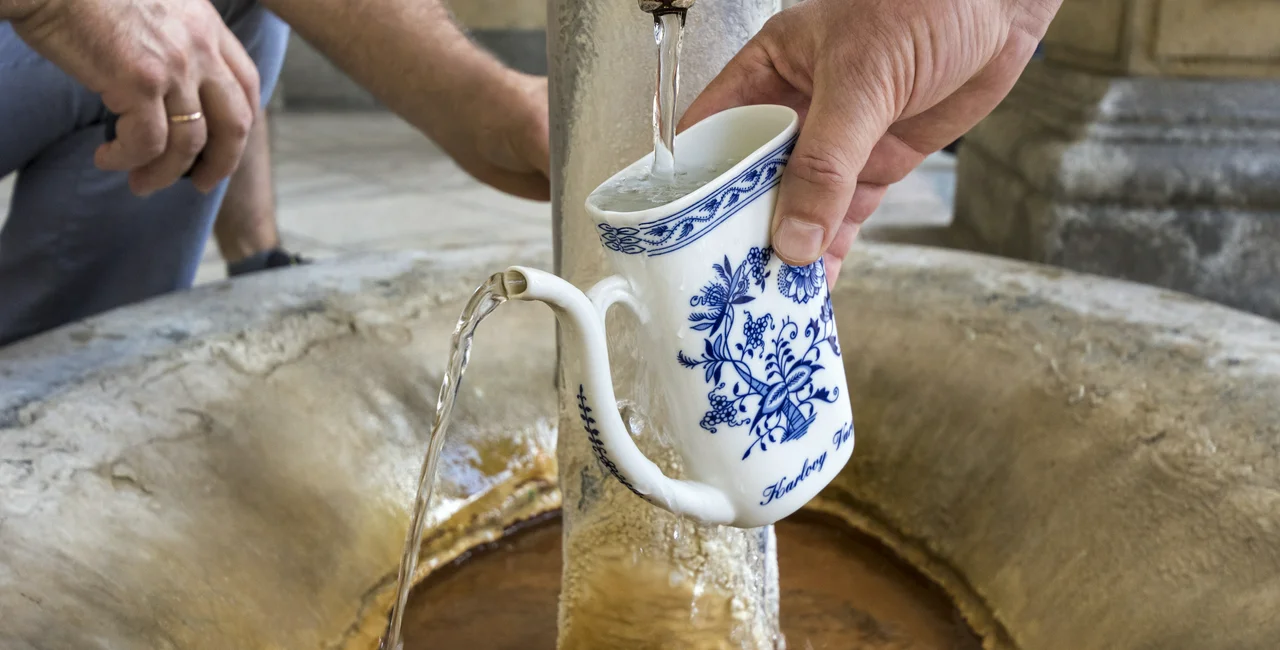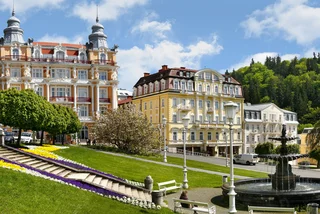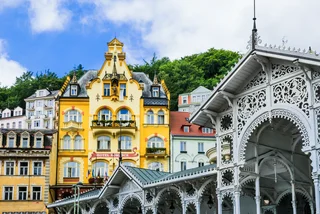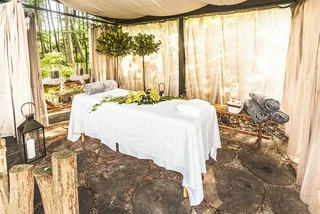Much has been written about the healing power of natural springs in today's Czech Republic which have a tradition dating back hundreds of years, though the healthful properties of taking the waters were already known to the ancient Romans and Celts. It’s well-known in Czechia, that Karlovy Vary boasts the largest concentration of healing hot springs in the world, but here are some things you might not know about Czech spas:
It all started with a king’s bath
Legend has it that the thermal springs in Western Bohemia were discovered by the Czech king, Charles IV, during the 14th century. The story goes that the king was on a hunting expedition near the royal castle at Loket when the pursuit of a deer led him to a thermal pool. The king’s doctor suggested that he bathe his injured leg in the warm water, leading to a successful cure, and Charles subsequently ordered that a town be founded on the site of the hot spring. This tale of the first royal spa treatment is most likely apocryphal, but it’s true that the largest and most famous spa town in the region still bears the king’s moniker, known today as “Carlsbad” (Charles’ Bath), or Karlovy Vary.
A literary giant left his mark
Karlovy Vary is closely bound to German literary giant Johann Wolfgang von Goethe. Goethe harbored a deep love for the Bohemia spa culture, famously stating he could live only in Weimer, Rome or Karlovy Vary. Over a 33-year period between 1785-1823, he made thirteen trips to the Bohemian spa resort, cumulatively spending three whole years of his life taking the waters. There he would write poems and diary entries, make drawings and geological studies, and set about exploring the beauty of the surrounding countryside.
In Mariánské Lazne he met, and became enchanted by, his great unrequited love, Ulrike von Levetzow. He was 72 and she was just 17, but despite the age difference, a friendship developed, which ultimately led to a marriage proposal. Sadly for Goethe, Ulrika declined his hand, and the heartbroken poet left in 1823, never to return. Visitors to Karlovy Vary today will find his name immortalized on the Goethe Trail, one of the most beautiful promenade paths in the city.
European and Hollywood royalty played a starring role, then and now
Czech spa towns have always attracted prominent cultural figures of the day. Following in the royal tradition established by Charles IV, European monarchs such as Russian Czar Peter the Great and Austrian Emperor Franz Josef came to Bohemia to take the waters. Composers such as Beethoven, Chopin, Mozart, and Paganini were celebrated visitors to the town. Other high-profile guests included philosophers, authors, and scientists, such as Dobrovský, Gogol, and Freud. Karlovy Vary’s popularity with celebrity visitors continues to this day, thanks to the annual Karlovy Vary International Film Festival, which unfailingly attracts Hollywood A-listers. Recent visitors include Jude Law, Robert de Niro, Renee Zellweger, Robert Pattinson, and Uma Thurman. Each year, expectant crowds line the spa colonnades for the festival’s renowned press conferences – whose popularity stems from their being held in public view on the colonnades – allowing festival visitors a chance to brush shoulders with the stars.
Three cities form a lovely triangle
In July 2021, the Czech Republic’s West Bohemian Spa Triangle was granted UNESCO World Heritage Status. The triangle consists of the three picturesque towns of Karlovy Vary, Mariánské Lázně, and Františkovy Lázně, and they join eight other European spa towns that now receive UNESCO protection. The award recognizes the exceptional quality of the architecture in these spa towns, as well as the importance of the treatment and balneotherapy methods, which were developed in the 18th century and continue to this day. It’s fair to say that there must be something in the water, as these spa towns successfully competed with large metropolises and became important sources of artistic, social, and political activity in their own right – a remarkable feat that has led to their special UNESCO status.
Oldest, highest, or hottest: Which one will you visit?
The spa at Karlovy Vary boasts more than 80 hot springs, all interconnected and rising more than two kilometers from deep underground. The warmest of them, the Vřidlo spring, emerges as a geyser in the Vřidlo colonnade hall, spurting up to 12 meters into the air. At 73°C, it’s scalding hot, so it is cooled before being used for treatments. Historically, a typical treatment program would consist of drinking regular doses of hot mineral water, accompanied by gentle walks along the colonnades.
Karlovy Vary may boast the hottest spa but here are a few more superlatives to consider: The oldest Czech spa is Teplice, which was founded in the 12th century. The Jáchymov Spa claims the title of oldest radon spa in the world while the highest Czech spa can be found in the picturesque Karlova Studánka at the foot of Praděd in the Jeseníky Mountains.
From May 6 to 8, 2022, festivities take place in Karlovy Vary including the opening of the reconstructed Vřídelní Colonnade and the unveiling of the new statue of Charles IV on Theater Square. A craft fair with historical attractions and creative workshops for children takes place Friday to Sunday. Read more about unique Czech spa towns to visit here.












 Reading time: 4 minutes
Reading time: 4 minutes 





















